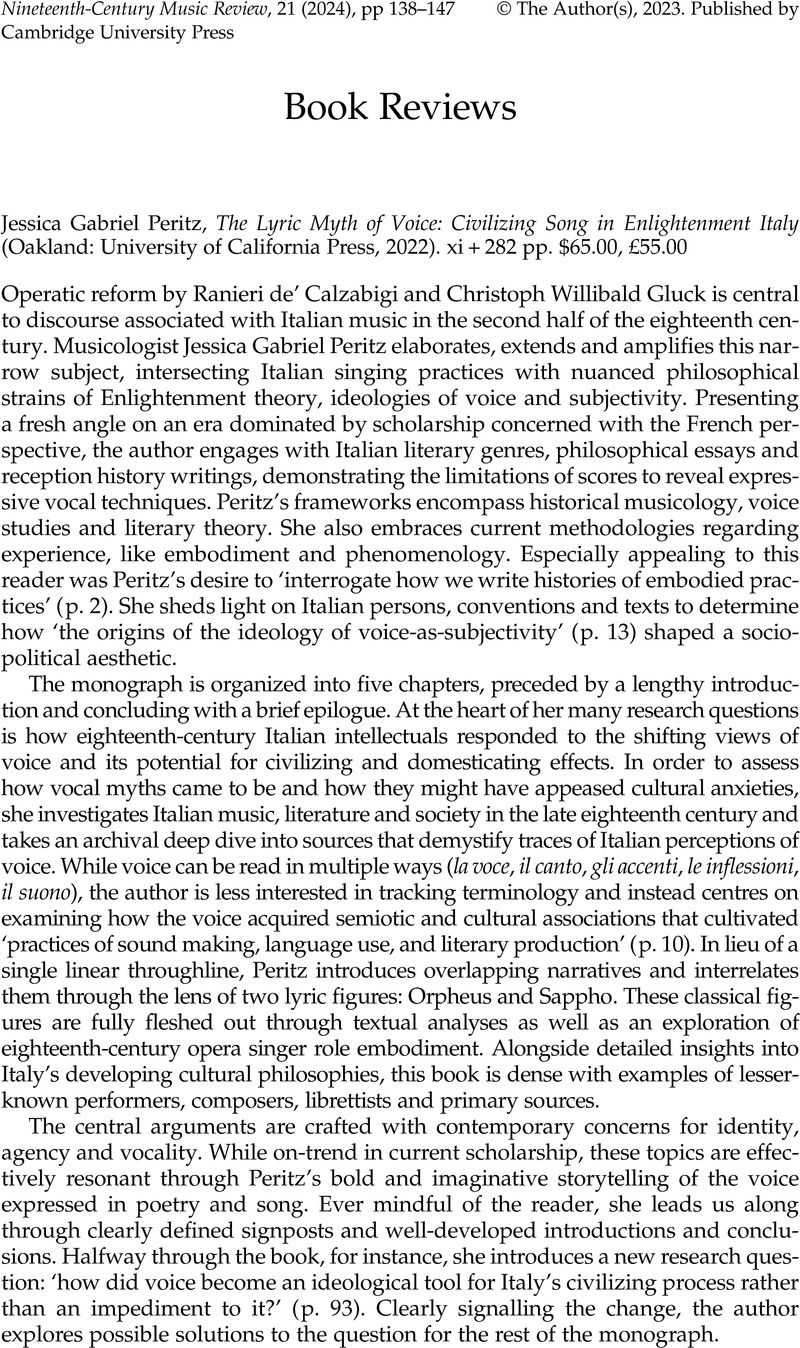No CrossRef data available.
Published online by Cambridge University Press: 26 September 2023

1 Mali, Joseph, Rehabilitation of Myth: Vico's “New Science” (Cambridge: Cambridge University Press, 1992): 203CrossRefGoogle Scholar.
2 Burney, Charles, General History of Music: From the Earliest Ages to the Present Period, 4 vols (London: T. Becket, 1776–1789): 4:496Google Scholar.
3 Abrams, M.H., Correspondent Breeze: Essays on English Romanticism (New York: Norton, 1986): 160Google Scholar.